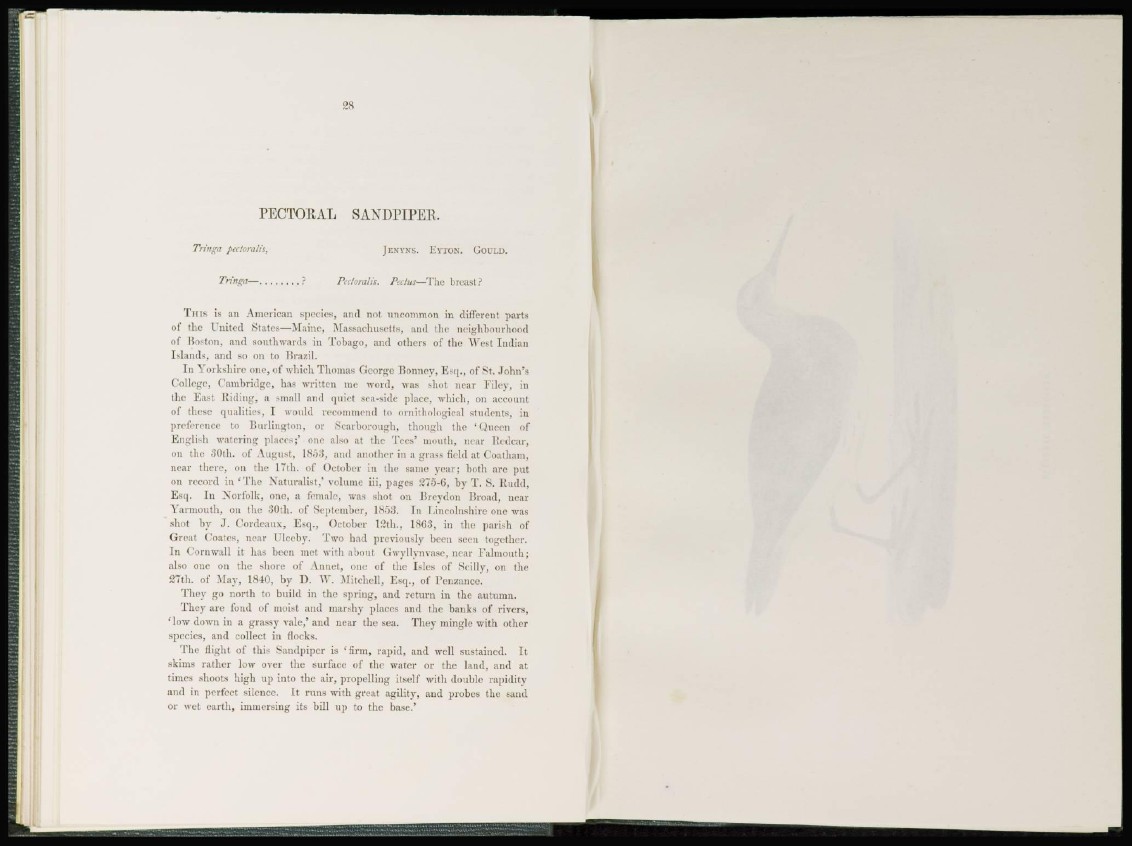
!2S
PECTORAL SANDPIPER.
Tn'nga pccforalis, JENYNS* EYTON. GOULD.
Tringa— ? Pec/omJis. Pectus—Tlie breast?
T i n s is an American species, and not uncommon in different parts
of fhe United States—Maine, Massachusetts, and t h e neighbourhood
of Boston, and southwards in Tobago, and others of t h e West Indian
Island-;, and so on to Brazil.
I n Yorkshire one, of which Thomas George Bonney, Esq., of St. John's
College, Cambridge, has w r i t t e n me word, was shot near Filey, in
the East Riding, a small and quiet sea-side place, which, on account
ol* these qualities, I would recommend to ornithological students, in
preference to Burlington, or Scarborough, though the ' Queen of
English watering places;' one also at the Tees* mouth, near Redcar,
on the 30th. of A u g u s t , 1853, and another in a grass field at Coatham,
near there, on t h e 17th. of October in the same year; both are p u t
on record in ' T h e Naturalist,' volume iii, p a g e s 275-6, by T . S. Rudd,
Esq. In Norfolk, one. a female, was shot on Breydon Broad, near
Yarmouth, on the 30th. of September, 1853. In Lincolnshire one was
shot by J. Cordeaux, Esq., October 12th., 1868, in the parish of
Great ('nates, near Ulceby. Two h a d previously been seen together.
I n Cornwall it has been met with about Gwyllynvase, near Falmouth;
also one on the shore of Annet, one of the Isles of Scilly, on t he
27th. of .May, 1840, by O. W. .Mitchell, Esq., of Penzance.
They go n o r t h to b u i l d in t h e spring, and r e t u r n in the autumn.
They are fond of moist and marshy places and t h e banks of rivers,
' l ow down in a grassy vale,' a n d near the sea. They mingle with other
species, and collect in flocks.
The flight of this Sandpiper is 'firm, rapid, and well sustained. It
skims rather low over the surface of the water or the land, a n d at
times shoots high up into t h e a i r , p r o p e l l i n g itself with double rapidity
and in perfect silence. Lt runs with great agility, and probes the sand
or wet earth, immersing its bill up to the base.'